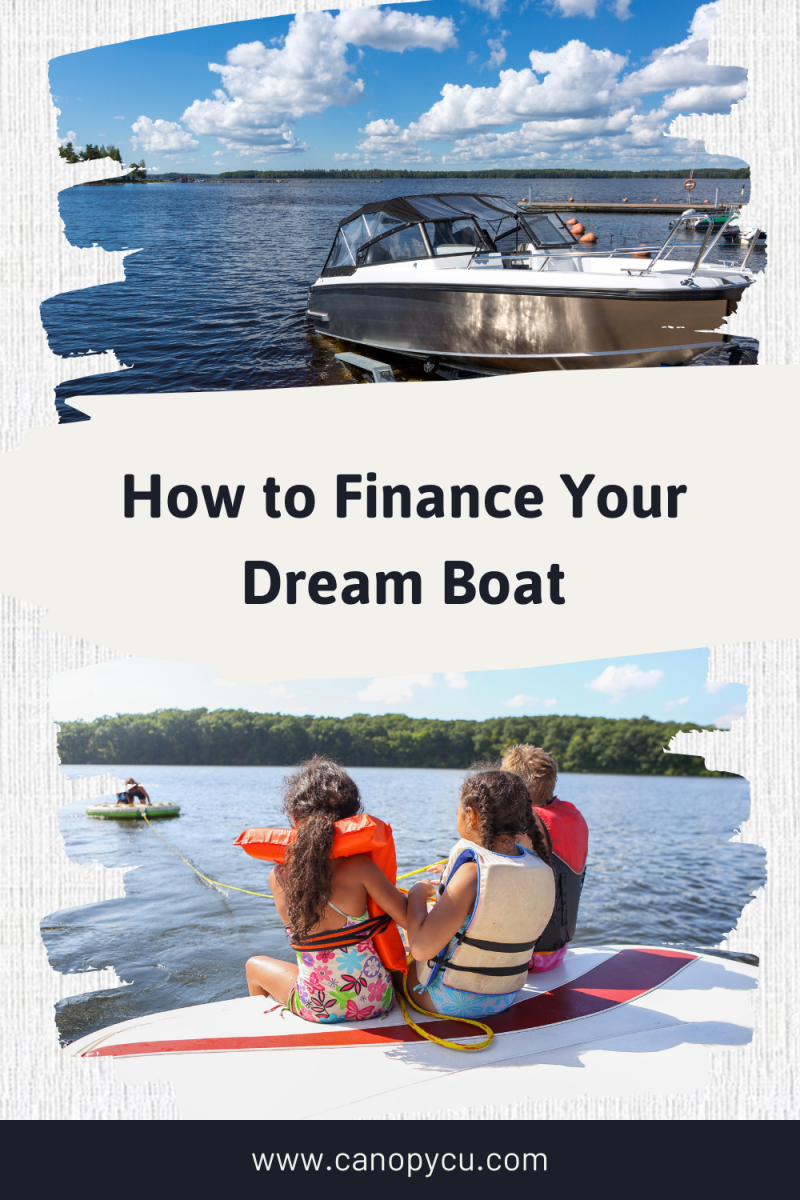Financing a Liveaboard Boat: Complete Guide to Making Your Floating Home a Reality
Understand live aboard boat financing
Live aboard a boat represent the ultimate freedom for many water enthusiasts. The dream of wake-up to gentle waves and e’er change scenery appeals to adventurers and minimalists similar. Still, finance a vessel suitable for full-time living present unique challenges compare to traditional home purchases.
Unlike conventional real estate, boats are considered depreciate assets, which affect how financial institutions approach lending. Understand the various financing options available specifically folive aboardrd vessels is crucial to make informed decisions about your float home investment.
Marine loans vs. Traditional mortgages
Marine loans function otherwise from traditional home mortgages in several important ways. While both are secure loans use the purchase asset as collateral, the terms and conditions vary importantly:
Key differences
-
Loan terms:
Marine loans typically offer shorter terms (10 20 years )compare to conventional 3030-yearortgages -
Interest rates:
Boat loans broadly carry higher interest rates, reflect the increase risk associate with mobile assets -
Down payment requirements:
Lenders much require 15 20 % down payment for boat loans, compare to amp little as 3 5 % for some home loans -
Tax implications:
Boats with sleeping quarters, cooking facilities, and a bathroom may qualify as a second home for tax purposes, potentially allow interest deduction
Understand these fundamental differences help set realistic expectations when approach lenders and plan your financing strategy.
Types of live aboard boat financing options
Specialized marine lenders
Marine lenders specialize in boat financing and understand the unique aspects of these transactions. They offer several advantages:
- Experience evaluate boat values and understand depreciation patterns
- Familiarity with marine surveys and documentation requirements
- Competitive rates for qualified borrowers
- Higher loan amounts and longer terms than general lenders
Companies like light stream,Essexx credit, and marine divisions of major banks focus specifically on boat loans and oftentimes provide the virtually favorable terms forlive aboardd vessels.
Home equity loans and helots
For current homeowners, leverage exist real estate equity present a viable financing option:
-
Home equity loans:
Provide a lump sum with fix interest rates, ideal for one time boat purchase -
Home equity lines of credit (hhelots)
Offer flexible access to funds with variable rates, useful for boat purchases plus renovations
These options typically offer lower interest rates than direct boat loans and may provide tax advantages. Notwithstanding, they increase the risk to your primary residence and require sufficient equity in your home.
Personal loans
Unsecured personal loans provide an alternative for finance smaller vessels or supplement other funding sources:
- No collateral require beyond the boat itself
- Faster approval process with minimal documentation
- Fix terms and payments for predictable budgeting
The trade-off come in the form of higher interest rates and lower maximum loan amounts, make this option advantageously suit for partial financing or smaller vessels.
Seller financing
Some boat owners offer direct financing to qualified buyers:
- Potentially lower credit requirements than traditional lenders
- Flexible terms negotiate direct with the seller
- Faster closing process without extensive lender requirements
While convenient, seller financing require careful contract review and oftentimes come with higher interest rates or shorter terms than commercial financing.
Qualify for live aboard boat financing
Credit requirements
Lenders evaluate borrowers base on several financial factors:
-
Credit score:
Most marine lenders require scores of 680 + for competitive rates, with 720 + prefer for premium terms -
Debt to income ratio:
Typically, cap at 40 45 % include the new boat payment -
Income verification:
Stable income history with documentation span 2 + years -
Assets and reserves:
Sufficient liquid assets to cover 3 6 months of payments
Improve these financial metrics before apply can importantly enhance loan approval chances and secure better terms.
The marine survey process
Lenders require professional marine surveys before finalize boat loans:
- Comprehensive inspection of hull, systems, and equipment
- Valuation assessment to confirm the boat’s market value
- Identification of necessary repairs or maintenance issues
- Documentation of the vessel’s condition for insurance purposes
Select a certify marine surveyor with experience in your specific boat type ensure a thorough evaluation that satisfy lender requirements while protect your investment.
Budget for live aboard life
Beyond the purchase price
The total cost of live aboard ownership extend comfortably beyond monthly loan payments:
-
Slip fees:
Monthly marina costs range from $10 25 per foot depend on location and amenities -
Insurance:
Specialized live aboard policies cover the vessel, personal belongings, and liability -
Maintenance:
Annual haul outs, bottom painting, system servicing (typically 5 10 % of boat value yearly ) -
Utilities:
Shore power, water, pump out fees, and connectivity costs -
Fuel:
Operate costs for engines and generators -
Reserves:
Emergency fund for unexpected repairs and replacements
Create a comprehensive budget incorporate these ongoing expenses provide a realistic picture of live aboard affordability.
Depreciation considerations
Unlike homes, boats typically depreciate over time, affect long term financial planning:
- New boats experience 10 15 % depreciation in the first year
- Subsequent annual depreciation average 5 8 % for wellspring maintain vessels
- Older boats (10 + years )may stabilize in value with proper maintenance
Understand depreciation patterns help inform purchasing decisions, specially whether to buy new or use, and how to structure financing terms.
Creative financing strategies
Boat partnerships and fractional ownership
Share boat ownership reduce individual financial burden:
- Legal partnerships divide purchase and operating costs
- Time-share arrangements base on percentage of ownership
- Write agreements cover usage, maintenance responsibilities, and exit strategies
While reduce costs, partnerships require careful relationship management and clear communication to succeed long term.
Live aboard charter arrangements
Some owners offset costs by charter their vessel when not in use:
- Airboat charters for qualified renters
- Skippered charters offer guide experiences
- Seasonal income potential during prime cruising months
This approach require appropriate insurance, business licensing, and consideration of wear and tear on systems and equipment.
Downsize to fund your boat
Many successful linerboards fund their lifestyle through strategic downsizing:
- Sell larger homes to purchase boats unlimited
- Convert traditional assets to liquid investments support marine lifestyle
- Minimize possessions to accommodate compact living spaces
This approach frequently provides the virtually financial freedom but require significant lifestyle adjustment and planning.

Source: ah360views.com
Insurance requirements for financed live aboard vessels
Lenders mandate comprehensive insurance coverage for finance boats:

Source: canopycu.com
-
Hull insurance:
Cover physical damage to the vessel -
Liability coverage:
Protection against damage to other vessels or property -
Live aboard endorsement:
Specific coverage for full-time occupancy -
Name storm coverage:
Essential for coastal and hurricane prone areas -
Navigation limits:
Geographical boundaries within which the vessel must operate
Insurance costs vary base on boat value, cruise area, and owner experience, typically range from 1.5 2.5 % of the insure value yearly for live aboard policies.
Tax implications of live aboard financing
The tax treatment of boat loans depend on several factors:
-
Second home deduction:
Boats with sleeping, cooking, and sanitation facilities may qualify as second homes for mortgage interest deduction -
Business use:
Charter operations may allow for depreciation and expense deductions -
Sales tax:
Varies by state, with some offer exemptions for vessels principally use in interstate waters -
Property tax:
Apply otherwise across jurisdictions, sometimes base on length or value
Consult with a tax professional familiar with marine specific regulations ensure compliance while maximize available benefits.
Common pitfalls to avoid
Underestimate total costs
First time linerboards oftentimes focus solely on purchase price and loan payments, overlook:
- Ongoing maintenance requirements and associated costs
- Marina fee variations and availability constraints
- System upgrades need for comfortable full-time living
- Weather relate operational expenses (heating, cooling, dehumidification )
Research actual expenses by connect with current linerboards provide realistic expectations.
Inadequate research
Successful boat financing require thorough investigation:
- Compare multiple lenders and loan products
- Understand resale values for specific makes and models
- Research live aboard regulations in target marinas
- Evaluate boat systems for livability in all seasons
Take time for comprehensive research prevent costly mistakes and financing disappointments.
Steps to secure financing for your live aboard boat
-
Check your credit:
Review report from all three bureaus and address issues before apply -
Determine budget:
Calculate maximum affordable payment include all ownership costs -
Research boat types:
Identify vessels suitable for live aboard use within budget -
Get pre-approved:
Secure financing commitment before begin serious shopping -
Find your boat:
Search within pre-approve parameters -
Complete marine survey:
Hire qualified surveyor to inspect potential purchase -
Finalize financing:
Submit survey and purchase agreement to lender -
Close the deal:
Complete documentation, transfer funds, and register vessel
Follow this methodical approach streamline the financing process while protect your interests.
Alternative financing approaches
Boat renovation financing
Some buyers prefer purchase older vessels at lower prices and renovating:
- Construction loans cover both purchase and renovation costs
- Phase renovations fund through personal savings or lines of credit
- Sweat equity reduce financial outlay through DIY work
This approach require realistic assessment of renovation skills, costs, and timelines.
Remote work and mobile income
The expansion of remote work opportunities has change live aboard financing:
- Location independent careers support mobile lifestyles
- Digital nomad income streams funding boat payments
- Reduced living expenses compare to land base housing
Demonstrate stable remote income can satisfy lender requirements while enable the freedom of live aboard cruising.
Conclusion: make your live aboard dream financially viable
Finance a live aboard boat require careful planning, thorough research, and realistic budgeting. By understand the unique aspects of marine lending, prepare your financial profile, and explore creative funding options, you can transform the dream of live on water into an achievable reality.
The virtually successful linerboards approach financing as part of a comprehensive lifestyle plan, balance purchase costs with ongoing expenses and maintenance requirements. With proper preparation and financial discipline, boat life offer not exactly a home but a transformative way of live that many find more fulfilling and economical than traditional housing.
Whether finance through conventional marine loans, leverage exist assets, or pursue alternative arrangements, the path to live aboard ownership begin with education and end with the satisfaction of make your float home a financial success.



